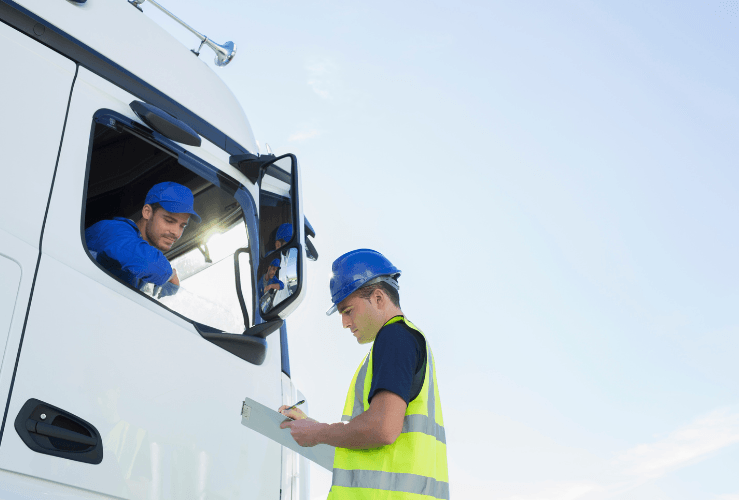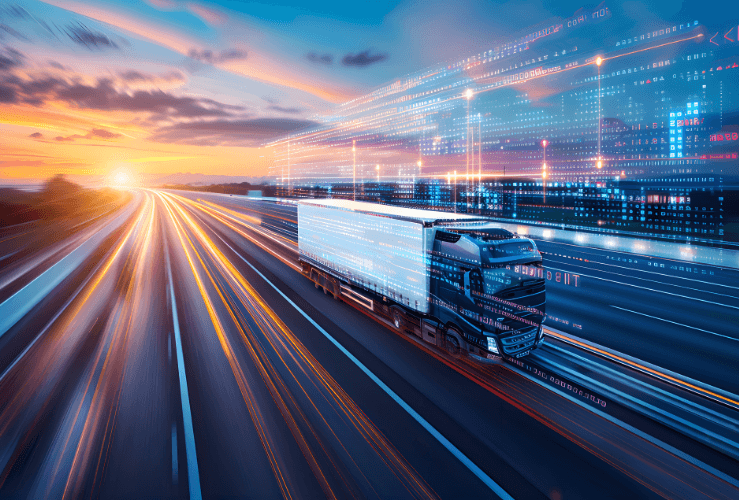Encouraging your drivers to carry out their responsibilities in the safest possible way is a top priority for any fleet, and a driver scorecard can help.
In recent years, the digital 'driver scorecard' has become a go-to solution for keeping track of how well drivers are driving and are commonplace among fleets that have already adopted telematics systems.
Since telematics systems can detect things like hard braking, excessive acceleration, speeding, seat belt use, idle time and many other metrics, they can be used to produce a report or 'scorecard' for each driver.

Why is safety so important for fleets?
Unsafe or otherwise poor driving can have a huge impact on a fleet and its personnel.
The main reason to focus on safety so much is to prevent an accident where a driver, other road user, or pedestrian is injured or even killed.
Secondly, if a driver has acted dangerously or irresponsibly, the company they work for may be open to legal proceedings, and therefore potentially suffer major costs and reputation damage - and by extension loss of business.
Then there's wrangling with insurance companies after something goes wrong - and of course higher insurance premiums.
But not all problems involve injuries and vehicle write-offs. The following undesirable driver behaviours can dent a firm's bottom line and can be tracked by a scorecard:
- Late starts
- Speeding
- Going faster than the company policy states
- Hard or excessive braking
- Harsh or excessive acceleration
- Harsh or excessive cornering
- Not wearing a seatbelt
- Excessive fuel consumption
- Using vehicle after work hours
- Excessive idling
The above issues can result in problems such as more collisions, more wear and tear, higher fuel costs and lower productivity.

How does a driver scorecard work?
While a driver scorecard is both a "carrot and stick" approach to encouraging drivers to do their job in a safe way, it is often discussed in a more positive (“carrot-centric") way.
With scorecard data at their fingertips, a fleet manager can easily identify drivers who may need extra training or advice in order to drive more safely.
Oftentimes, simply bringing up an issue can result in better performance. For example, a driver may not be fully aware they accelerate heavily, or surpass the company speed guidelines on a regular basis - and may address such issues following a conversation about them.
Scorecard visibility
In most - if not all - cases, scorecard data is available to both fleet managers and drivers, so it's easy for everyone to see where improvements can be made. This data is usually viewed via a mobile/tablet or desktop app.
Scorecards are an efficient way of determining how safety improves over time and they tend to focus the minds of all concerned.
In the days before telematics and scorecards, it was impossible to know how well a driver did their duties - until there was, for example, an accident, or a noticeable increase in repair/maintenance costs in relation to a particular vehicle/driver.
Once instituted, the scorecard helps drivers to be mindful of their behaviour on an ongoing basis.
Driver scorecard gamification
"Gamification" is the application of gaming elements to a scenario that otherwise is unrelated to gaming. In the case of scorecards, a driver will be able to see when they reach the upper echelons of a fleet's driver "league table".
Critically, gamification involves gaining things like points or rewards as they progress.
While scorecards can work by simple recognition, they can also be effective with more tangible rewards such as gift cards and may even help a driver make the case for a pay rise!

Are there any downsides of scorecards?
The key objective of telematics-based scorecards is to improve safety.
Safety generally means going slow and steady, approaching lights, junctions and roundabouts with caution and care. However, this 'slow and steady' approach can often seem at odds with efficiency - e.g. when a delivery driver needs to get 30 drops done by a certain time, but they also need to drive with extra care and attention.
Some drivers also argue that telematics systems can misinterpret data - for example, using rolling momentum might trigger an 'overspeed' note.
Others suggest the focus on idling may be misguided. For example, idling may help with keeping oil circulated or the turbo warm in some situations, or when you need to be able to move off efficiently. Short periods of idling, for example, may extend the life of a turbo system after use, for the sake of slightly higher fuel consumption. In general, though, it should be emphasised that idling wastes fuel.
With scorecards being commonplace, it's sensible to know how to get a good score.
Tips for getting a good scorecard score
For drivers, remaining employed and in good standing with their managers is critical. If you're behind the wheel of a telematics-rigged lorry/van, you'll get a higher score by following this advice:
- Don't idle; turn off as often as you can to reduce fuel consumption.
- Use cruise control to save fuel.
- Brake and accelerate gently and progressively to reduce wear and tear.
- Leave plenty of space between you and the vehicle ahead (wear/fuel/stress).
- Plan ahead at roundabouts and traffic lights.
- Keep your speed down (note any company speed guidelines, which may be lower than the posted speed).
- Avoid trying to "beat the traffic lights" (excessive acceleration).
- Read the vehicle handbook and learn how to drive the vehicle in the safest, most optimal way.



